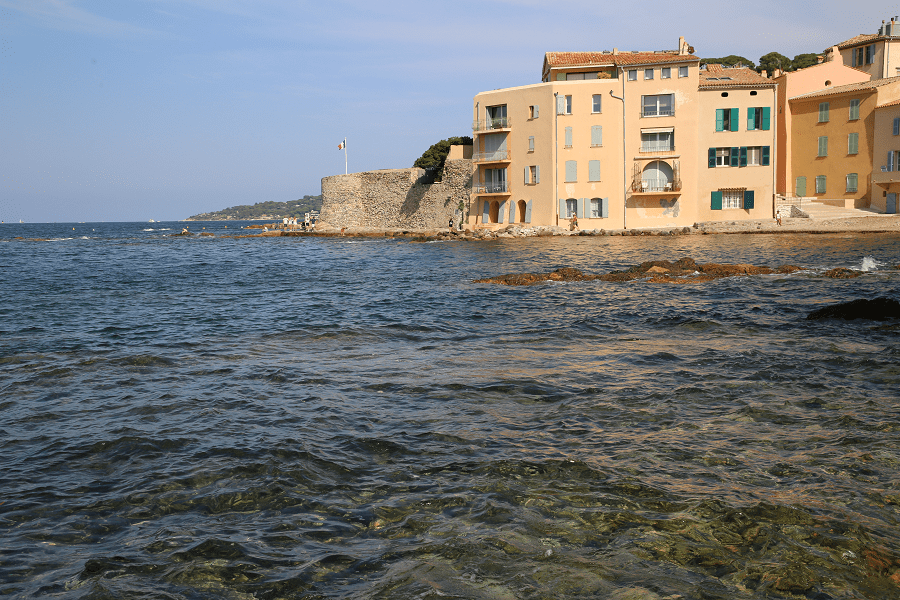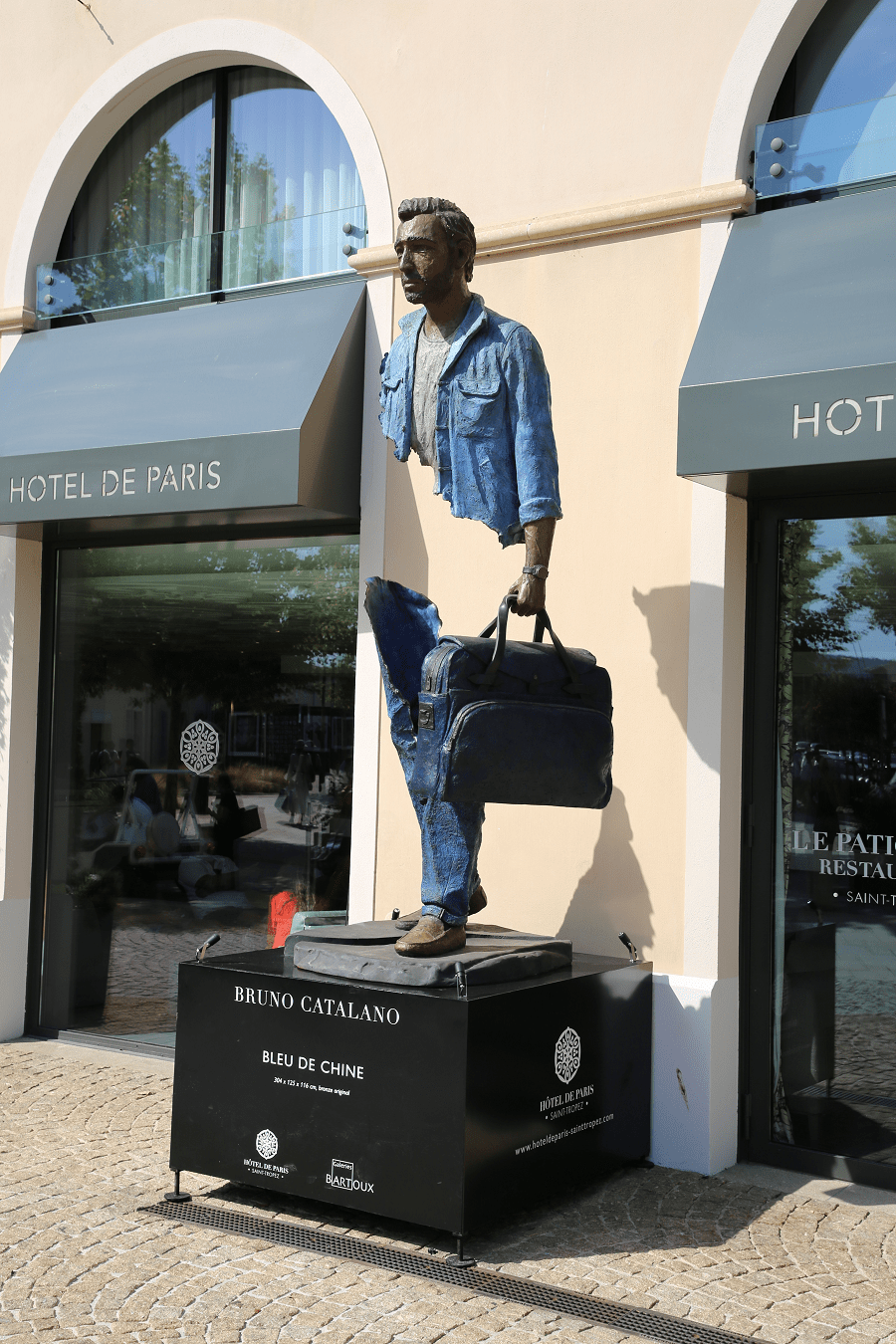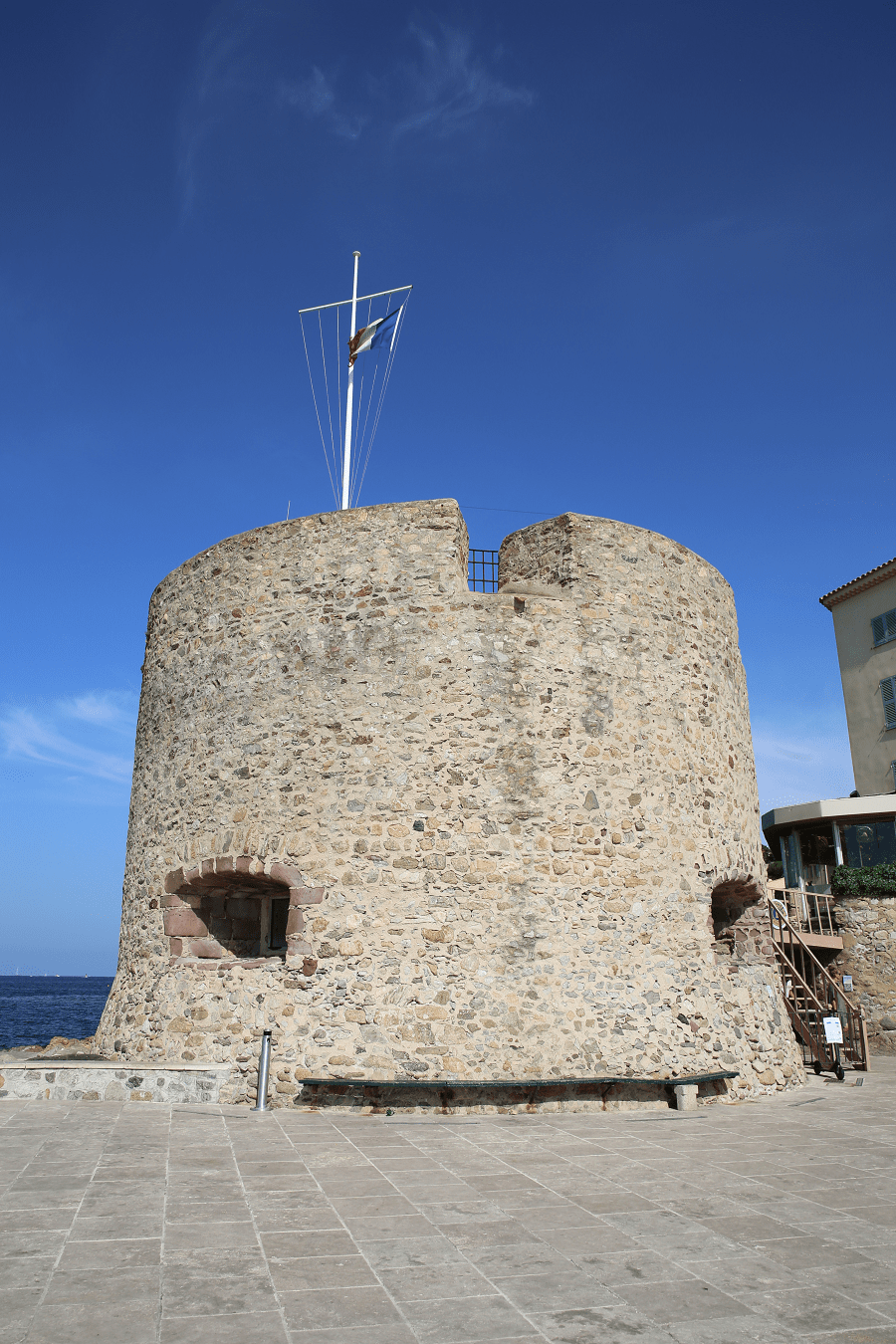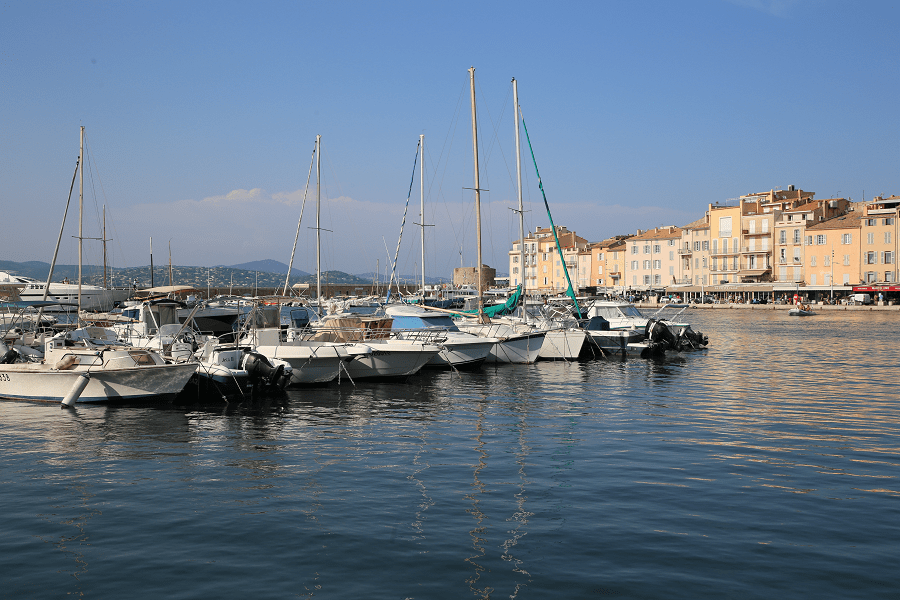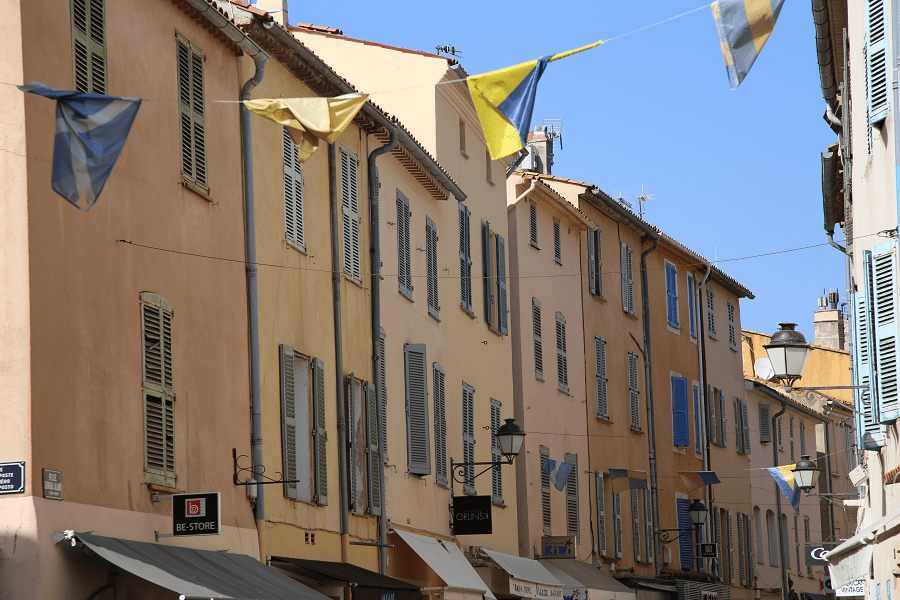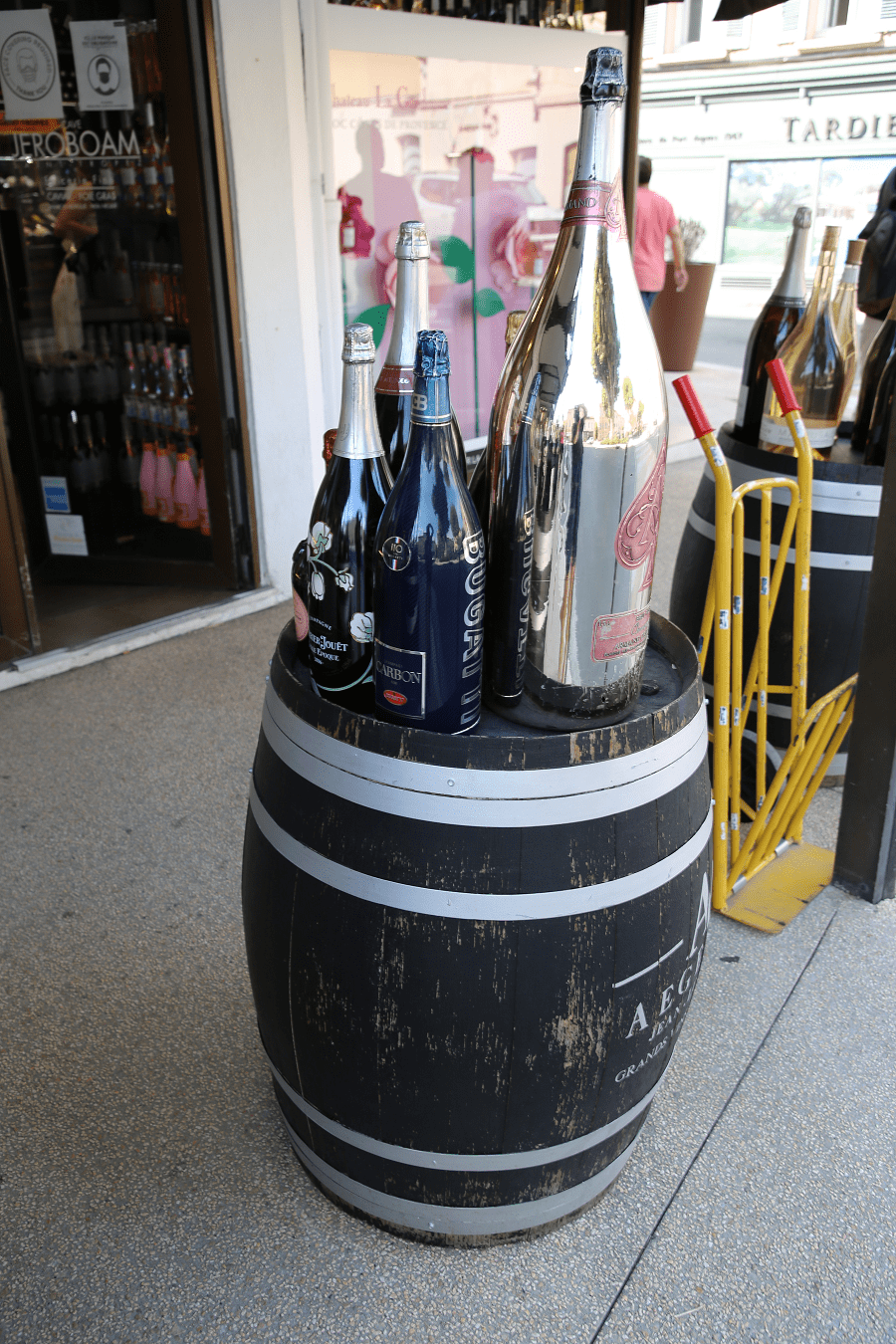Saint-Tropez (Fr. Saint-Tropez) is a city on the TOP French Riviera, 68 km (42 miles) west of Nice and 100 km (62 miles) east of Marseille in the Var department of the Provence-Alpes-Côte d’Azur region of Occitania, Southern France.
Guy de Maupassant, suffering from syphilis, was one of the first to come here for rest in his yacht in 1887. In 1888 he published a logbook under the title Sur l’eau where he described his arrival on 12 April. Paul Signac discovered this small fishing port in 1892 on board his yacht l’Olympia. There he bought La Hune, a house which he made his studio and became the place of pilgrimage for many painters. The proximity of thermal spas attracted artists like Colette in the 1920. Léon Volterra, director of Parisian theatres, became mayor in the 1930, ensuring its national promotion (visits by Louise de Vilmorin, Arletty, Jean Cocteau).
In the 1950s, Saint-Tropez became an internationally known seaside resort on the Côte d’Azur, thanks to the filming of Et Dieu, who created the woman (And God Created Woman, 1956 French romantic drama film directed by Roger Vadim and starring Brigitte Bardot), and a great number of the artists of the Nouvelle Vague (French New Wave cinema) or more popular (The Troops of St. Tropez series), and finally a holiday resort of the European and American jet set celebrities. For example, its five-star Hotel Byblos, where in 1971 Mick Jagger married his first wife, Bianca, reflects St-Trop’s surreal mix of the glamour.
Tourism and main attractions
- The Revelen gate was one of the entrances to the village controlled by the Guard Corps
- The citadel of Saint-Tropez and its “marine museum”: from the foot of the ramparts, the citadel offers a beautiful panorama over the city, the bay and the Massif des Maures. Purchased by the city from the State in 1993, it has since been the subject of a restoration program. The site has been classified as a Historic Monument since 1995
- The Guillaume tower or Suffren tower
- The Portalet tower or Daumas tower from 16th century
- The Jarlier tower was originally called “the common area”: the median adjacent to the Jarlier tower was used to thresh wheat or other peasant activities. The tower is shaped like a ship’s bow
- Rue du Portail-Neuf and the three flying buttresses of the Chapel of Mercy: the dome is in glazed tiles and the door is adorned with serpentine, dark green marble, a typical ornament of the country
- The rue Gambetta, pierced in the 19th century during the golden age of Saint-Tropez, the great families of sailors and merchants had mansions built there
- The Byblos hotel built in the early 1960s by the Lebanese hotelier Jean Prosper Gay-Para
- The port, its lighthouse and its famous Sénéquier café
- Place des Lices with the café, a historic establishment, testimony to the sweetness of life on the coast
- La maison des Papillons: at the initiative of the painter Dany Lartigue, son of the famous photographer Jacques Henri Lartigue, a collection of nearly 20,000 butterflies is presented in paintings recreating the environment of butterflies
- La Madrague, famous home of Brigitte Bardot
- La Mandala, villa of Bernard Tapie
- The Latitude hotel built in 1932 by architect Georges-Henri Pingusson
Religious buildings
The 18th century Italian Baroque-style Notre-Dame-de-l’Assomption church in Saint-Tropez houses a bust of Saint Tropez surrounded by old blunderbusses from the Bravado and an organ from 1870. A campanile crowns the top of the bell tower. The facade is amazing with the statue of Saint Tropez as a Roman centurion.
Chapels and oratories:
- Chapelle Sainte-Anne: built at the beginning of the 17th century in thanksgiving, after a plague epidemic that spared the city
- Chapel of Black Penitents of Mercy
- Chapelle Saint-Elme, Saint-Mème
- Saint-Joseph Chapel
- Saint-Tropez Chapel known as the Chapel of the Saint-Tropez Convent
- Saint-Eloy
- Saint Anne’s
- Chapel of White Penitents of the Annonciade
The Annonciade museum: the Annonciade chapel was built between 1510 and 1558 by the brotherhood of the White Penitents. It was stripped down in the 19th century: the high altar went to Sainte-Maxime, the woodwork was used for the parish church, the silver ornaments went to Fréjus and in 1821, the bell tower was knocked down. In 1908 André Dunoyer de Segonzac was curator of the museum. Georges Grammont, a wealthy industrialist and enlightened collector, obtained the liberation of the Annonciade chapel from the city and had it fitted out at his expense. The museum was inaugurated in July 1955 and in August Georges Grammont donated major pieces from his collection to the museum. The Annonciade museum bears witness to the French School and is at the forefront of innovative movements.
Beaches
Tropezian beaches are along the coast in the Baie de Pampelonne, which lies south of Saint-Tropez and east of Ramatuelle. Pampelonne offers a collection of beaches along its five-kilometre shore. Each beach is around 30 metres wide with its own beach hut and private or public tanning area.
Many of the beaches offer windsurfing, sailing and canoeing equipment for rent, while others offer motorized water sports, such as power boats, jet bikes, water skiing and scuba diving. Some of the beaches are naturist beaches.
Main beaches are: Plage des Graniers, Bouillabaisse beach, Plage de la Moutte, Plage du Pilon, La Garrigue, Plage de Capon, Plage des Canoubiers, La Ponche Beach, Plage de la Rabiou.
Gastronomy and restaurants
The cuisine is mainly Mediterranean.
The most famous delicatessen is the tarte Tropézienne, which is a cake made from a sugar brioche, split in two at its waist, and garnished with a mixture of two creams (pastry cream and buttercream), a recipe for family origin of the Polish pastry chef Alexandre Micka. This recipe has a French patent filing on 18 August 1972.
Best restaurants are located in the Old City: La Vague d’Or – Cheval Blanc, L’Isoletta, La Petite Plage, Le BanH Hoï (Asian), Le Patio, La Ponche, Cucina Byblos (with Cucina having replaced Rivea, the restaurant at Hotel Byblos continues to reinvent itself under Alain Ducasse).
Shopping
Shopping is one of the priorities of the city. Gold Triangle is an area delimited by the port, Place de la Garonne and Place des Lices. Dior, Louis Vuitton, Gucci, Fendi and many others offer their new collections.
From the end of October to the start of November the whole town reduces their prices for la Grande Braderie events.
Every Tuesday and Saturday morning Place des Lices offers a great open air market.
Transport and how to get?
Saint-Tropez is accessible by car from the A8 (E 80) with the exit “Draguignan-Le Muy-Golfe de Saint-Tropez”, then the RD 25 to Sainte-Maxime for 19 kilometers and the former RN 98 over 12 kilometers.
By train, the nearest Saint-Raphaël-Valescure station, served by TGV, iDTGV, Intercités and TER Provence-Alpes-Côte d’Azur, is located 32 kilometers away.
The Varlib departmental bus network connects the Saint-Tropez bus station to Fréjus, Hyères, Toulon and Saint-Raphaël, among others.
The closest major international airport is Nice-Côte d’Azur Airport, 91 kilometres away. National connections can be made at Toulon – Hyères airport 44 kilometres away, but prestigious customers prefer La Môle – Saint-Tropez airport 15 kilometres away, Cannes – Mandelieu airport 40 kilometres away or Grimaud heliport.
Maritime shuttles connect the port of Saint-Tropez to those of Cogolin, Grimaud, Sainte-Maxime, Fréjus, Saint-Raphaël, Cannes, Antibes and Nice.
Shortest distance by car:
From Menton (tolls): 2 h 7 min (142 km) via A8
From Monaco (tolls): 2 h (134 km) via A8
From Beaulieu-sur-Mer (tolls): 2 h 4 min (129 km) via A8
From Villefranche-sur-Mer (tolls): 2 h 9 min (119 km) via A8
From Nice (tolls): 1 h 48 min (112 km) via A8
From Cagnes-sur-Mer (tolls): 1 h 27 min (99.9 km) via A8
From Antibes (tolls): 1 h 34 min (96.1 km) via A8
From Cannes (tolls): 1 h 29 min (84.5 km) via A8
From Mandelieu-La Napoule (tolls): 1 h 7 min (75.6 km) via A8
From Fréjus (tolls): 55 min (37.5 km) via D8
From Saint-Raphaël: 1 h 1 min (39.7 km) via D8
From Sainte-Maxime: 25 min (15.6 km) via D559 and D98A
From Cavalaire-sur-Mer: 26 min (17.4 km) via D559
From Toulon: 1 h 23 min (69.1 km) via D98
From Aix-en-Provence (tolls): 1 h 43 min (121 km) via A8
From Nîmes (tolls): 2 h 45 min (225 km) via A8
From Marseille (tolls): 2 h 1 min (144 km) via A8
From Avignon (tolls): 2 h 29 min (205 km) via A7 and A8
From Montpellier (tolls): 3 h 15 min (271 km) via A8
From Sète (tolls): 3 h 18 min (300 km) via A8
From Agde (tolls): 3 h 31 min (324 km) via A9 and A8
From Pézenas (tolls): 3 h 33 min (326 km) via A9 and A8
From Béziers (tolls): 3 h 41 min (336 km) via A9 and A8
From Perpignan (tolls): 4 h 18 min (420 km) via A9
From Argelès-sur-Mer (tolls): 4 h 39 min (446 km) via A9
From Collioure (tolls): 4 h 44 min (453 km) via A9
From Narbonne (tolls): 3 h 47 min (359 km) via A9 and A8
From La Baule-Escoublac (tolls): 11 h 24 min (1,164 km) via A7
From Saint-Nazaire (tolls): 11 h 22 min (1,149 km) via A7
From Nantes (tolls): 10 h 5 min (1,089 km) via A62
From Saumur (tolls): 9 h 14 min (958 km) via A7
From Les Sables-d’Olonne (tolls): 10 h 23 min (1,077 km) via A62
From Cognac (tolls): 8 h 34 min (863 km) via A62
From Angoulême (tolls): 8 h 34 min (861 km) via A62
From Eauze (tolls): 6 h 43 min (635 km) via A9
From La Rochelle (tolls): 8 h 59 min (925 km) via A62
From Rochefort (tolls): 8 h 39 min (897 km) via A62
From Saintes (tolls): 8 h 19 min (861 km) via A62
From Arcachon (tolls): 8 h 6 min (800 km) via A62
From Royan (tolls): 8 h 43 min (865 km) via A62
From Biarritz (tolls): 7 h 48 min (808 km) via A64
From Saint-Jean-de-Luz (tolls): 7 h 49 min (813 km) via A64
From Bayonne (tolls): 7 h 37 min (795 km) via A64
From Dax (tolls): 7 h 37 min (774 km) via A64
From Lourdes (tolls): 6 h 39 min (674 km) via A64
From Pau (tolls): 6 h 52 min (691 km) via A64
From Périgueux (tolls): 7 h 41 min (775 km) via A20
From Bordeaux (tolls): 7 h 26 min (748 km) via A62
From Toulouse (tolls): 5 h 8 min (506 km) via A61 and A9
From Carcassonne (tolls): 4 h 17 min (415 km) via A9
From Andorra (tolls): 6 h 55 min (596 km) via A9
Main information
Area: 15.2 sq. km
Population: 4 400
Languages: French
Currency: euro
Visa: Schengen
Time: Central European UTC +1
Coordinates: 43°16′24″N 6°38′23″E
See here best sea and ocean resorts of France and Spain (223 objects)



